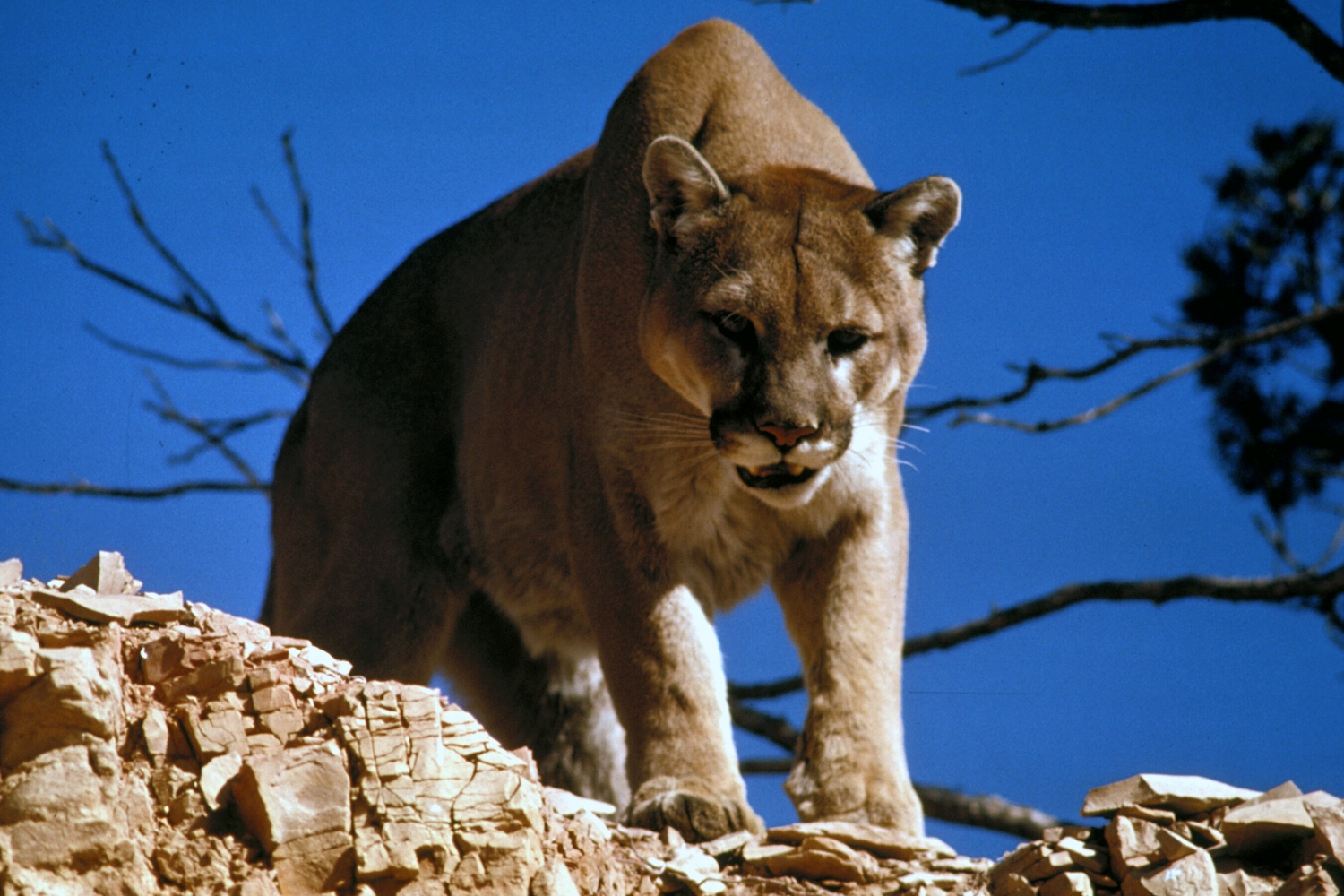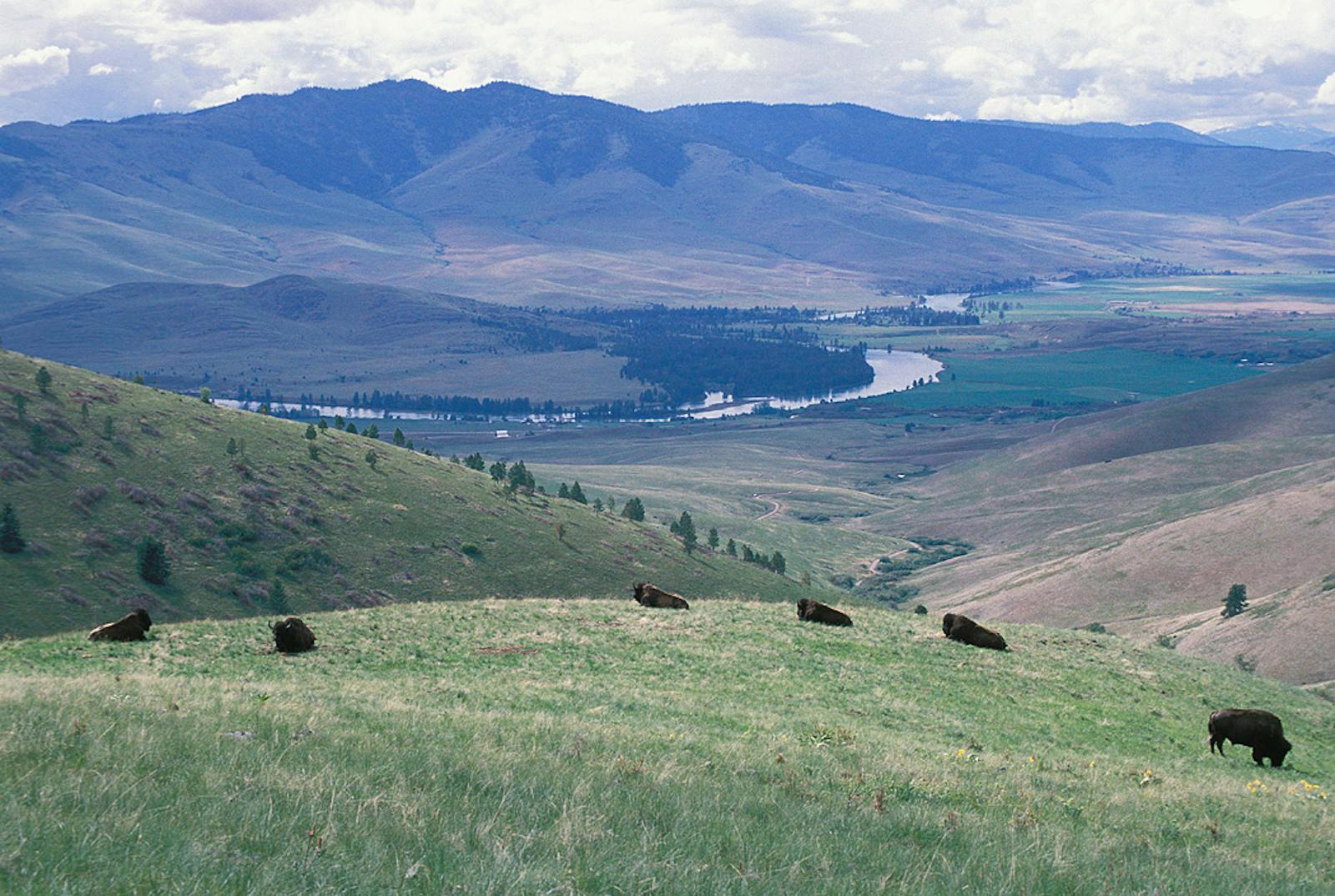Montana Valley and Foothill Grasslands
The ecoregion’s land area is provided in units of 1,000 hectares. The conservation target is the Global Safety Net (GSN1) area for the given ecoregion. The protection level indicates the percentage of the GSN goal that is currently protected on a scale of 0-10. N/A means data is not available at this time.
Bioregion: Greater Rockies & Mountain Forests (NA13)
Realm: Northern America
Ecoregion Size (1000 ha):
10,004
Ecoregion ID:
394
Conservation Target:
58%
Protection Level:
1
States: United States: MT, WY. Canada: AB
The Montana Valley and Foothill Grasslands ecoregion forms the matrix of the northern Greater Yellowstone Ecosystem (GYE), westward into central Idaho. The extensive grassland of this ecoregion was once crafted and maintained by the heavy grazing of native large herbivores such as bison and the periodic fire regime, supporting a rich community of native flora and charismatic fauna of the “American West”.
Unlike the surrounding mountain ranges, which contain significant protected areas, a mere 3% of this ecoregion is protected today. Some 40% of habitat outside protected areas is still intact across the ecoregion, but the Canadian portion has less than 10% intact, given the tendency of agriculture and other development in Canada to concentrate along the southern border.

The flagship species of the Montana Valley and Foothill Grasslands ecoregion is the plains grizzly bear. Image credit: Creative Commons
The ecoregion stretches from northeast of Calgary, Alberta, where it borders the Northern Shortgrass Prairie ecoregion on the east and the Northern Rockies Conifer Forests ecoregion on the west, southward to the foothills of Idaho’s Sawtooth Range and, in the southeast, the northern foothills of the Bighorn Mountains in Montana and Wyoming. The Wyoming Basin Shrub Steppe ecoregion lies to the south on the east side of the GYE and the Snake-Columbia Shrub Steppe ecoregion lies to the south on the west side of the GYE. Outliers of the Montana Valley and Foothill ecoregion occur around isolated mountain ranges in the Northern Tallgrass Prairie.
The eastern portion of the Montana Valley and Foothill Grasslands ecoregion consists of the Rocky Mountain Front, a spectacular area where the Great Plains meet the Rockies, and includes the uppermost lowland areas of the Missouri River watershed. The western portion of the ecoregion is drained by the Clark Fork and its tributaries and by tributaries of the Snake River.
The climate of the Montana Valley and Foothill Grasslands ecoregion is characterized by dry, warm summers and, considering the latitude, mild winters. Warm, dry “Chinook” winds often blow down the eastern slopes of the mountains in late winter, rapidly melting the snow. The Blackfoot people call this wind “Snow Eater”i. The mean annual temperature is 3.5ºC, mean summer temperature 14ºC, and mean winter temperature -8ºC.
The dominant vegetation is grassland composed of rough fescue, Parry’s oatgrass, Junegrass, wheatgrass, and other grasses, with many forbs (broad-leaved herbaceous plants). Plant species richness is relatively high, for example 487 species in Montana’s Centennial Valley, just west of Yellowstone National Park. Sagebrush-dominated shrubland occurs in higher and drier valleys in the rain shadows of mountain ranges, and narrow riparian forests are found along rivers. Glaciated prairie pothole wetlands occur along the Rocky Mountain Front.

Mountain lion. Image credit: Creative Commons
Characteristic wildlife inhabiting this ecoregion include white-tailed deer, pronghorn, bison, elk, and bighorn sheep, although all of these are greatly depleted. This may be the last ecoregion where the plains grizzly bear was found. This enigmatic animal was larger than grizzly bears in the mountains and hunted bison, among other animals. Its taxonomy is controversial, but it may have been a distinct subspecies, which is now extinct. The few grizzly bears in the Rocky Mountain Front area of this ecoregion today are probably mountain grizzlies venturing out onto the edge of the Plains.
Birdlife is relatively rich. Large breeding populations of trumpeter swans and sandhill cranes occur in the Centennial Valley. This ecoregion also supports imperiled fish populations, including relict and endemic westslope cutthroat trout, Yellowstone cutthroat trout, and fluvial Arctic grayling. The latter is a glacial relict of a much larger Arctic population and the last river-dwelling grayling population in the conterminous 48 states.
This ecoregion has been highly altered by livestock grazing, conversion to cropland, mining, wetland drainage, and invasion by exotic species. Greatly increasing human population and residential development are probably the greatest current threats, underscoring the need to get remaining natural habitat protected as quickly as possible.
Priority conservation actions for the next decade are to: 1) vastly increase designation of conservation lands; 2) greatly slow the rate of human population growth and residential development; and 3) improve management of grasslands and livestock and recover populations of imperiled species, including fishes and grassland megafauna such as bison, pronghorn, and grizzly bear.
Citations
1. Ricketts, T.H. et al. 1999. Terrestrial Ecoregions of North America: A Conservation Assessment. Island Press, Washington, D.C.
2. Montana Valley and Foothill Grasslands. https://en.wikipedia.org/wiki/Montana_Valley_and_Foothill_grasslands
3. Noss, R.F., C. Carroll, K. Vance-Borland, and G. Wuerthner. 2002. A multicriteria assessment of the irreplaceability and vulnerability of sites in the Greater Yellowstone Ecosystem. Conservation Biology 16:895-908.



